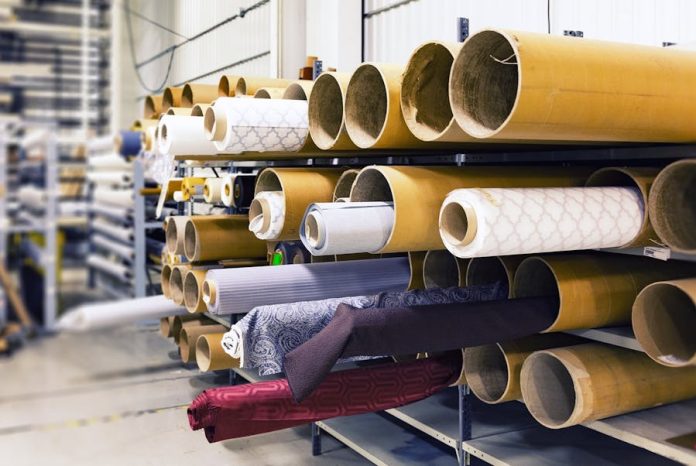Interlining fabric plays a critical role in the garment industry, providing structure, support, and shape to various clothing items. Understanding the manufacturing process of interlining fabric is essential for textile professionals, designers, and anyone interested in the intricacies of fabric production. In this blog post, we will explore the steps involved in the interlining fabric manufacturing process, the types of interlining, and their applications.
What is Interlining Fabric?
Interlining fabric is a type of material used in apparel to enhance the appearance and durability of garments. It is typically placed between the outer fabric and the lining to provide additional support and improve the garment’s overall structure. Interlining can be made from various materials, including cotton, polyester, and blends, and can be either fusible (with an adhesive backing) or non-fusible.
Types of Interlining
Interlining can be classified into several categories based on its construction and application:
- Fusible Interlining: This type has an adhesive coating on one side, allowing it to bond with the outer fabric when heat is applied. It is commonly used in garments like jackets and coats.
- Non-Fusible Interlining: This interlining is sewn into the garment rather than glued. It offers more flexibility and is often used in tailored garments.
- Woven Interlining: Made from woven fabric, this type provides a crisp finish and is typically used in formal wear.
- Knitted Interlining: This interlining is made from knitted fabric, offering stretch and comfort, making it suitable for casual wear.
- Interfacing: A broader category that includes various types of interlining used to reinforce and shape fabrics.
The Manufacturing Process of Interlining Fabric
The manufacturing of interlining fabric involves several key steps, each crucial in ensuring the final product meets quality standards and performance expectations.
1. Material Selection
The first step in the interlining fabric manufacturing process is selecting the appropriate raw materials. Common materials include:
- Cotton: Known for its breathability and comfort.
- Polyester: Durable and resistant to wrinkles.
- Blends: Combining different fibers to achieve desired characteristics.
2. Yarn Production
Once the raw materials are chosen, the next step is producing the yarn. This involves spinning the fibers into yarn through various methods, including ring spinning, open-end spinning, or air-jet spinning. The choice of spinning technique affects the yarn’s texture, strength, and appearance.
3. Fabric Weaving or Knitting
After yarn production, the next step is to weave or knit the yarn into fabric.
- Weaving: Involves interlacing two sets of yarn at right angles. This can be done using various loom types, such as plain, twill, or satin looms. Each weaving technique produces different fabric characteristics, such as texture and durability.
- Knitting: Involves creating fabric by interlocking loops of yarn. Knitted interlining is typically more flexible and stretchy compared to woven interlining.
4. Finishing Processes
Once the fabric is woven or knitted, it undergoes various finishing processes to enhance its properties. These processes may include:
- Chemical Treatments: Applying finishes to improve characteristics like water resistance, flame retardancy, or soil resistance.
- Mechanical Finishing: Techniques such as calendering (pressing the fabric under heat and pressure) or mercerizing (treating cotton with sodium hydroxide to enhance luster and strength) can also be applied.
5. Adhesive Application (for Fusible Interlining)
For fusible interlining, an adhesive is applied to one side of the fabric. This is typically done using a coating machine that evenly distributes a thermoplastic adhesive. The adhesive is crucial for ensuring that the interlining bonds effectively with the outer fabric when heat is applied during garment construction.
6. Cutting and Shaping
After finishing, the interlining fabric is cut into specific shapes and sizes according to the design requirements. This can be done manually or using automated cutting machines, which ensure precision and reduce waste.
7. Quality Control
Quality control is an essential part of the manufacturing process. Each batch of interlining fabric undergoes rigorous testing to ensure it meets industry standards. Tests may include assessments of tensile strength, color fastness, and dimensional stability.
8. Packaging and Distribution
Once the interlining fabric passes quality control, it is packaged for distribution. Proper packaging is essential to protect the fabric from damage during transport and storage. The interlining is then sent to manufacturers who will use it in garment production.
Applications of Interlining Fabric
Interlining fabric is widely used in various garments, including:
- Coats and Jackets: Provides structure and warmth.
- Formal Wear: Enhances the crispness and shape of dress shirts and suits.
- Casual Wear: Adds comfort and flexibility to everyday clothing.
- Accessories: Used in bags, hats, and other fashion items to provide support.
Conclusion
The interlining fabric manufacturing process is a complex yet fascinating journey that transforms raw materials into essential components of the garment-making industry. Understanding this process not only highlights the craftsmanship behind fabric production but also emphasizes the importance of interlining in creating high-quality apparel. As fashion continues to evolve, the role of interlining fabric remains pivotal in ensuring that garments are not only stylish but also functional and durable.


